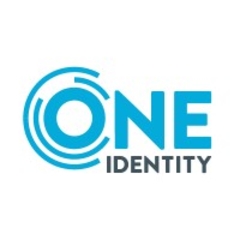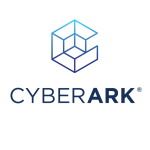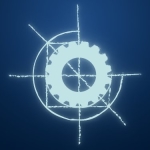What is our primary use case?
I have been in various roles. I have been a developer, an operational manager on this One Identity tool, and also a product analyst. We have used it in various phases.
I'm an official partner. The consultants I work with have provided me with a consultancy license, and the clients have their own licenses, but we work with our own licenses. Whenever there is a vendor bug or something is needed, we use our license to raise a ticket on behalf of our client.
The consultancy that I work with has been One Identity's Partner of the Year for the last five years. We have offices in Europe, the Middle East, Asia, Africa, and the Americas. In Europe, the Middle East, and Africa, we have been the top partner for the last three years, and in Asia-Pacific, we have been the top partner for the last year.
We have a license program with them. When we sell the product, it's a partnership between One Identity and us. They get a share of the profit, and we get a share. The client pays the full price of the product.
How has it helped my organization?
One Identity is cost-effective compared to the market. It offers functionalities and features at a very low price relative to ForgeRock or SailPoint. The first advantage you see is the heavily reduced cost.
There are also some other aspects. For example, it provides a lot of functionality out of the box. You don't need to spend money on external developers to customize or do some special configuration that requires a person for additional maintenance. Other than that, there are some additional security features like attestations and approval features that are intuitively made inside.
These features give you an advantage immediately, and in the long run, they simplify the audits. You don't have to be around the auditors every time to explain things. You give them a specific account to use for the audit and allow them to play around with the tool.
One Identity Manager helps minimize gaps in governance coverage among test, dev, and production servers. We have four or five environments. Based on that, there are configuration parameters with which you can segregate between every environment. It's quite easy and configurable.
Depending on which modules you install, it helps to close the security gap between privileged and standard users. In Identity Manager, there is a module called Application Governance. If you install that module, you get that functionality or features, but many clients prefer a custom implementation. IGA is not supposed to provide PAM-related functionalities. That's why they sometimes push clients to take a bundle of IAM and PAG solutions together, which is One Identity Safeguard.
With Safeguard, you can cover your privilege and identity access management. In fact, you can control the access governance of who has what access in your PAM environment through the Identity Manager itself. They are interconnected, but Identity Manager can't independently give you this functionality.
One Identity Manager helps us consolidate procurement and licensing. Who has what permissions and their validity is well maintained. Most of them get attested every three or four months, depending upon the configuration. You can see which licenses are needed. In fact, in the newer version, since version 9.x, they have a new field showing when the license was last used or how actively it is being used.
Sometimes, if it senses that it has not been used for one year or one and a half year based on the configuration parameters, it will send an email that we have not used it for this much time, so we will remove it. It will remove it with no questions asked. So it is quite smart enough to handle those licensing decisions.
The solution helps streamline application access decisions. Every application has the necessary groups and entitlements assigned to it, so you can independently streamline their workflows. It's a highly customizable tool that lets you group together workflows for, say, 10 Active Directory applications because they are all in the AD domain. You can assign a single workflow for them.
However, if you want every application to have a different workflow or access management, you can assign that. From inside the application governance module, you can assign the privilege level and how privileged or sensitive the accesses are. Depending on that, it will provide the threat and fraud level or what approvals might be needed. So all these are quite intuitive and smartly managed.
The application compliance is handled quite well. It isn't great because it tends to create performance issues in the system. Compliance issues are calculated reactively and proactively. There are two types of SODs: prevention and detective. It's smart enough to detect it, but this can lead to performance issues because of the size of the system you are working with. This is something that has to be done by the manager. You can make your system digest the performance degradation to keep the SOD at an expected level.
Application auditing is pretty much what is called attestation, and it's mostly provided out of the box, but a lot of customization is possible here. In most cases, I have seen customization being done also here. Depending upon that, you can configure it in various ways. You can have multiple attestation policies attesting various things, or you can have a single attestation policy handling multiple things. You can configure and schedule it accordingly and define the approval workflows of those attestations. If an attestation is rejected, what should be the action? If it's missed or raised, no one decides how it should be handled. These are well handled.
Many governance decisions can be made without IT intervention. Most things are pretty self-explanatory in the web portal. You get an email or a notification on the web portal. At most, what happens is that people get so many notifications because they are a backup owner for so many things that sometimes too many notifications come down to them. Other than that, I haven't seen anyone complaining that they don't understand what they need to do when it comes to approval.
What is most valuable?
My favorite feature is the ease of customization. You can change, optimize, and update it at your convenience. I haven't seen that in many other products available.
We use One Identity Manager to connect to SAP IDM. SAPconnect target systems are integrated into One Identity Manager, and we've made several SAP connections we have made with One Identity Manager. The solution connects with Snow, which you can use to manage your disconnected systems.
Most clients I have worked with prefer a custom approach. So some prefer Snow, some prefer some other IDM tool with which they want to manage their disconnected systems. So, yeah, you can say yes and no, to be honest. Like, yes, there is a functionality that has been provided, but it's not very matured enough. So that's why I believe clients tend to be a little customized on that front.
One Identity Manager connects SAP accounts to employee identities under governance. That's completely autonomous. Once the target system connection is made, the product is available in the IT shop web frontend. You can order it from there. One Identity Manager handles it by itself. You can customize, but usually the vendor has created an out-of-the-box functionality to do all these operations.
The solution provides IGA for the aspects of SAP that are more difficult to manage. With One Identity Manager, the good thing is that you can customize. In most of the clients I have worked with, the T codes or different custom SAP tables were later introduced in a greenfield project, you don't see these custom tables more often. Out of the box, the SAP connector gives you around 32 to 36 tables in the SAP target system that are more generic tables, but there are custom tables about the T roles or the special attributes. You can customize your connector accordingly, so there is an XML parser provided in the sync editor. You can use it to achieve all those operations.
I'm unfamiliar with SAP-related workflows because clients don't have any specific SAP workflow. They have their own workflows, and One Identity Manager is configured for various product approvals. That's how they are managed. If you want to create a customized workflow, whether it's SAP HANA or any other product-specific workload, you can easily create it.
One Identity Manager provides a connection with Snow, where you can manage your disconnected systems. Most of the clients I have worked with prefer a custom approach. Some prefer Snow or another IDM tool to manage their disconnected systems. There is functionality that has been provided, but it's not mature enough. I believe clients tend to be a little customized on that front.
It connects SAP accounts to employee identities under governance. It's completely autonomous. Once the target system connection is made, the product is available in the IT shop web front end. You can order it from there and everything. One Identity Manager handles it by itself, so you don't need to customize it, but the vendor is given an out-of-the-box functionality to do all those operations.
One Identity offers a single platform for enterprise-level administration and governance of users' data on privileged accounts. The good thing is that much of the functionality comes out of the box. You don't need to customize if you don't want. In a greenfield project, this tool is optimal for those purposes. If the user number is around 1 million or under that data scale, it's a good tool to run on from the IGA perspective. With One Identity, they don't want to focus on IGA. They want to expand the horizon of cybersecurity. There are native tools like Safeguard and others. You can even integrate your PAM accordingly with your IGA and IAM.
There are two types of interfaces in One Identity. One is the phased-out interface, which was known as a web designer. This is getting phased out with Angular now. Angular was one of the lagging points where the user interface was not up to the mark with the out-of-the-box functionalities. Many customers had to customize heavily to get a level of intuitiveness. Now, Angular's web portal has been notched up. You get AI suggestions, IntelliSense, and lots of fraud detection out of the box, like threat level. It's been improved in the recent version, and it's been working phenomenally well.
Business roles are used extensively, and custom implementations are done over business roles. The number of cloud apps I would be telling is a little less because their Starlink connector still hasn't matured enough. It's still not a high-performance tool, but it has the capability to do so.
Nowadays, every organization has almost at least a few apps in the cloud. It's important even if the organization is heavily based on on-premises infrastructure. With this tool, you get so many things that work with this cloud infrastructure, it doesn't let you down completely. When you compare the performance of this with a native PowerShell connector or SAP connector, for example, you feel that the performance could be enhanced a little bit. It's something that is becoming mature in the latest versions. I'm confident they will improve it further in the upcoming versions.
What needs improvement?
One area for improvement is zero trust. Besides that, performance is a big factor. I've heard from multiple clients that One Identity's front end is not so performance-optimistic. It depends on how you have configured and deployed the system. At the end of the day, I would say that's something they need to improve.
Still, whenever a critical bug is released, they address the defect pretty quickly compared to any other competitors in the market. At the same time, there is a problem with support. They have limited knowledge about things that may affect their tool. You are deploying this tool in a client's environment, and multiple things would impact it, like proxy servers, load balances, other infra technologies.
Because their company is so focused on just their tool and related technology, they can't support you much. At times, it becomes frustrating. While you are paying a little less than your competitors, you expect some support, compliance, or expertise from the company. If a certain load balancer is unable to handle your tool, you should know what load balancer would be perfect or what configuration you should use.
For how long have I used the solution?
We have used One Identity Manager for five and a half years.
What do I think about the stability of the solution?
I rate One Identity Manager eight out of 10 for stability.
What do I think about the scalability of the solution?
I rate One Identity Manager nine out of 10 for scalability.
How are customer service and support?
I rate One Identity support seven out of 10. I have done multiple tickets. I am in touch right now because I'm in the middle of an upgrade for a major client for One Identity. I have been closely in touch with them. At times, there are things that can impact their product, like load balances that are part of the product when you deploy it in a matured environment.
In those cases, they can't support you much because they just say that load balances or these things are not something we support. You have to get the support from the necessary vendors they have, and those vendors say, "We are the load balancer. We don't support your tool. You need to go back to your vendor."
You're between two things. At times, it seems like a big company that is not very new to the market should have the basic knowledge or idea of how to get these things up. There are performance issues for so many clients of One Identity, but they can't give you a concrete answer. They can tell you that there is an infrastructure issue, but they lack the knowledge of the infrastructure issue, that knowledge is quite lacking in them. I would say that is something they need to improve.
We don't use the premier support. There are two types of support: one support is between the partner and the firm, and another is between the client and the product company. For the premium support, One Identity provides certain employees, developers, or consultants from their own company. It's the most exclusive contract you can have with them.
The second type of support involves giving you the product, the support portal, and some sort of knowledge. Then, maybe you can hire someone from them for a limited period of time. The predominant work that you need to do with the product, like deployment, maintenance, development, or bug fixes, you do via some partner companies like us.
How would you rate customer service and support?
Which solution did I use previously and why did I switch?
I have used SailPoint Identity. One Identity Manager is much better. One Identity Manager is better on a smaller scale of employees. It can handle a scale of half a million or one million, but beyond that, SailPoint is a better tool.
How was the initial setup?
Deploying One Identity Manager is easy and standardized. If it's a greenfield project, the initial deployment should not be difficult if you know your stuff. A proper runbook would be helpful. In our consultant's company, we usually share these runbooks with new consultants who join and who will deploy it into a new client's location.
These come in handy. Otherwise, it can be a little tricky, especially if you are upgrading an existing environment. At that time, it depends upon what sort of data situation is present in the database that you are upgrading. It can become tricky if the consistency checks are not matched or there are some weird data scenarios. Otherwise, it's quite a smooth process.
If it's a standardized deployment, one person is more than enough to handle it. The deployment has two parts. One is the database upgrade, which takes between 30 minutes to two hours. Then, there's the app and web server installation. If it's an upgrade, you can upgrade it in 10 to 15 minutes, but a new installation takes 30 minutes.
What's my experience with pricing, setup cost, and licensing?
The pricing of One Identity Manager is competitive. Compared to its competitors, One Identity is priced quite brilliantly. ForgeRock and Sailpoint cost about 1.5 times, making One Identity quite economical.
What other advice do I have?
I rate One Identity Manager nine out of 10.
Which deployment model are you using for this solution?
On-premises
Disclosure: PeerSpot contacted the reviewer to collect the review and to validate authenticity. The reviewer was referred by the vendor, but the review is not subject to editing or approval by the vendor. The reviewer's company has a business relationship with this vendor other than being a customer: Reseller





















